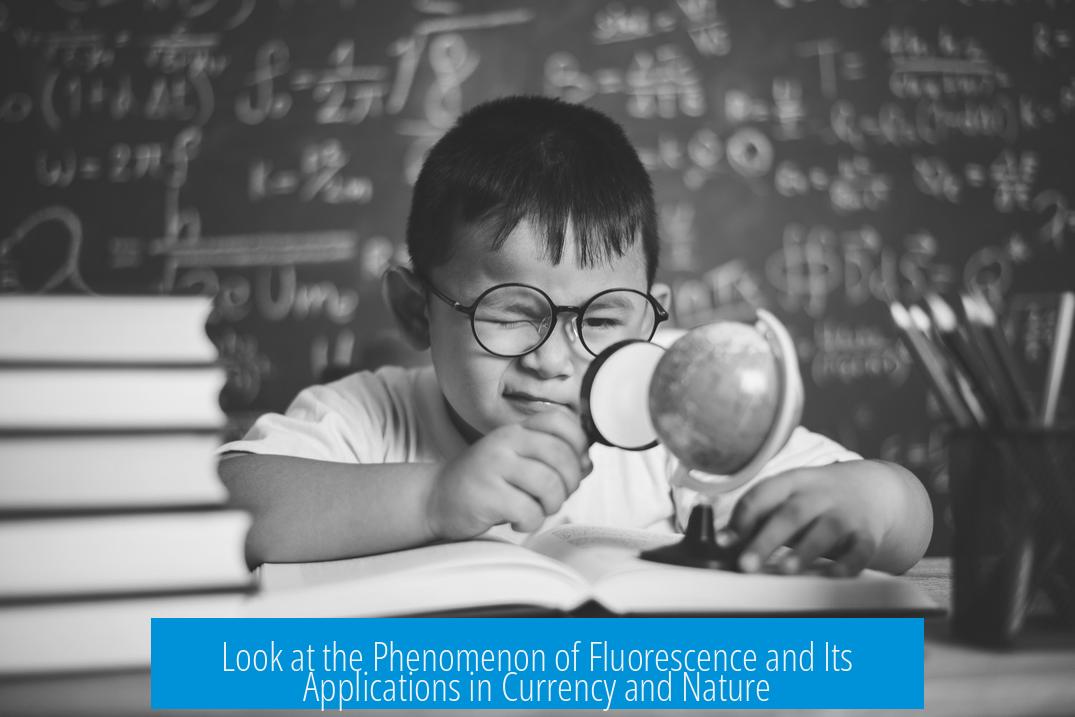Understanding the Phenomenon of Fluorescence

Fluorescence occurs when certain materials absorb light at one wavelength and then emit light at a longer wavelength, often visible as a glow under UV illumination. This process typically involves an electron in the material absorbing energy, moving to an excited state, and then returning to a lower energy state by emitting a photon.
Fluorescence in Currency
Some banknotes fluoresce to help verify authenticity. For example, Ukrainian hryvnias printed on paper can display fluorescence under ultraviolet (UV) light. This glow helps users identify real notes. However, plastic versions of these currencies often lack this property, showing no fluorescence.
Nature of Fluorescence Emission
Ordinarily, fluorescence involves electrons transitioning between discrete energy states. This typically yields emission of light in a narrow range of wavelengths, producing a specific color, often described as monochromatic or near-monochromatic.
In many materials, absorbed light energy dissipates as heat instead of light, causing fluorescence to be a relatively rare phenomenon at the molecular level.
White Fluorescence from Single Compounds
Unusual cases exist where a single compound appears to fluoresce white. This contradicts the typical expectation of single-color emission. The explanation often lies in complex molecular behavior, including overlapping emissions from multiple excited states or broad vibrational energy distributions.
These effects combine to produce a fluorescence spectrum that spans much of the visible range, perceived by the eye as white light. Such observations invite further study into molecular photophysics.
Observation Conditions for Fluorescence

- Fluorescence is commonly observed under UV light, which excites the fluorescent states.
- Laboratory studies might use UV lamps shining on samples contained in flasks to analyze emission spectra.
- The intensity and color of fluorescence can vary depending on the sample composition and excitation source.
Summary of Key Points
- Fluorescence results from light absorption followed by emission at longer wavelengths.
- Most materials dissipate absorbed light as heat rather than fluorescing.
- Typical fluorescence is narrow-band and monochromatic due to single energy state transitions.
- White fluorescence indicates complex overlapping emissions or broad vibrational bands.
- UV light is the standard excitation method to observe fluorescence.
- Currency materials can be fluorescent or not, depending on substrate and ink composition.
What causes some materials to fluoresce white instead of a single color?
White fluorescence occurs when a single compound emits light across multiple wavelengths. This can happen due to a mix of molecular states and vibrations releasing broad-spectrum light rather than a sharp, single-color emission.
Why do many materials not show visible fluorescence?
Most absorbed light in materials converts to heat rather than light. Only certain compounds have the structure to emit fluorescent light, making visible fluorescence rare in many substances.
How does fluorescence work in currency like Ukrainian hryvnias?
Fluorescence in currency depends on the material. Paper bills often contain fluorescent substances, while plastic versions may not. This difference affects if the bill glows under UV light.
Does fluorescence require UV light to be observed?
Fluorescence is commonly seen under UV light because UV provides energy that excites electrons. When electrons return to lower energy states, they emit visible fluorescent light.
Why is fluorescence typically monochromatic?
Fluorescence usually involves electrons moving between specific energy states, causing emission at a particular wavelength. That produces a narrow or single color rather than multiple colors.





Leave a Comment